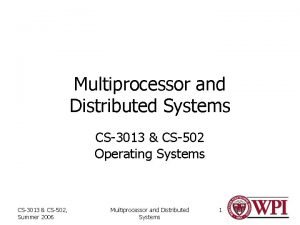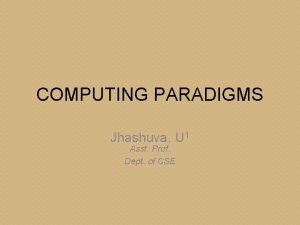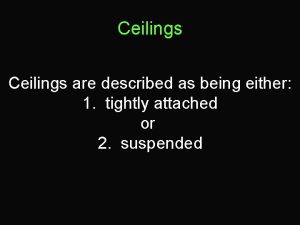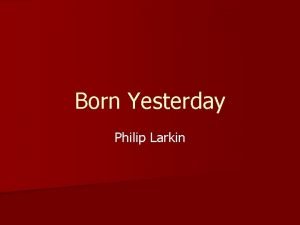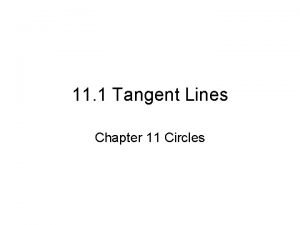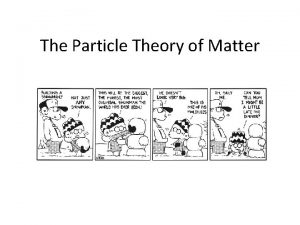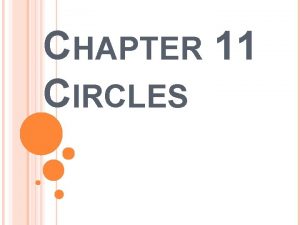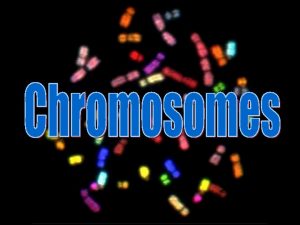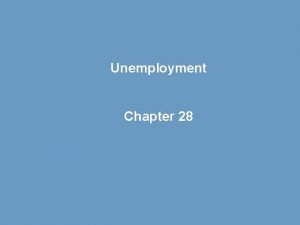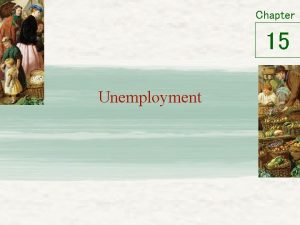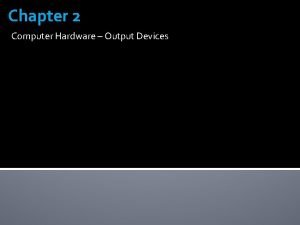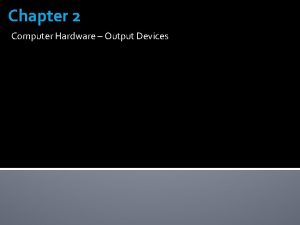Unemployment Chapter 7 Introduction Unemployment output are tightly








- Slides: 8

Unemployment Chapter #7

Introduction • Unemployment & output are tightly linked – but not perfect • Unemployment is a lagging economic indicator – Can be a mistaken guide to policy – Rising GDP may be of little solace to those still without a job • Costs of unemployment not equally distributed • Finding a job takes time • Job matching process illustrated by the Beveridge Curve – Shows unemployment rate vs. number of job openings • During Great Recession (2007 -09) & years following unemployment high, but job vacancies higher in period following recession

The Anatomy of Unemployment • Five key characteristics of unemployment in the U. S. 1. 2. 3. 4. 5. Large unemployment rate variations across groups defined by age, race, or experience. High turnover in the labor market. Flows in/out of employment high relative to # employed. A significant part of turnover is cyclical: Layoffs/separations high in recessions, and voluntary quits in booms. Most newly unemployed remain unemployed for only a short time. Much of unemployment consists of people who will be unemployed for quite a long time. • The size of the labor force is determined from surveys by the BLS – Labor force = unemployed (U) + employed (E) • Unemployed is one who is out of work and who either 1. 2. Has actively looked for work during the previous 4 weeks OR Is waiting to be recalled to a job after having been laid off • Employed is one who during the reference week (including 12 th of month): 1. Did at least one hour of work for pay in the last week 2. Worked at least 15 hours as unpaid worker for enterprise owned by a family member OR 3. Was not working, but only temporarily absent from work (ex. vacation or maturity leave)

Unemployment Variations Across Groups • The aggregate unemployment rate tells us the share of the labor force that is unemployed – The aggregate number conceals wide variations across various segments of the population • Teenagers have much higher unemployment rates than older workers • Female unemployment was higher than male unemployment through the 1970 s, but now lower than male unemployment • Black unemployment is higher than that of their white cohorts • The relationship between the aggregate unemployment rate, u, and that of groups is: (1), where w i are the fraction of the civilian LF that falls within a specific group

The Unemployment Pool • At any point in time there is a given number (pool) of unemployed people • Labor market turnover, flows in/out of unemployment is large • A person can become unemployed for one of four reasons: 1. 2. 3. 4. New entrant or reentrant into the LF Quit a job to look for better one & register as unemployed while searching Laid off Lose a job (fired or firm closes) • There are three ways of moving out of the unemployment pool: 1. Hired into a new job 2. Laid off may be recalled 3. Unemployed stop looking for a job, and thus move out of the labor force • Unemployment rises when more people are entering the pool than leaving – Job losses represent ½; voluntary separations, new entrants & reentrants ½. 1. Average 2012 monthly manufacturing flows 1. Added 2. 1 / 100 employees to payrolls 2. Removed 2 / 100 employees from payrolls

Cyclical & Frictional Unemployment • Frictional unemployment exists when the economy is at full employment – Results from the structure of the labor market, including: § The nature of jobs in the economy § Social habits § Labor market institutions Frictional unemployment rate = natural rate of unemployment • Cyclical unemployment is in excess of frictional unemployment – Occurs when output is below the full employment level – The presence of cyclical unemployment indicates a downturn in the economy • Unemployed persons suffer both from their income loss and from the related social problems that long periods of unemployment cause • Costs of cyclical unemployment: § Okun’s law: 1% increase in unemployment reduces output by 2% § Distributional impact of unemployment may be more dire for some groups than others (Ex. Teenagers vs. older workers) § In addition to lost output from unemployment, there is reduced tax revenues • Social costs of unemployment: § Include increased divorce rates, suicide rates, and depression

Determinants of the Natural Rate Can be thought of in terms of the duration and frequency of unemployment • Duration depends on cyclical factors and structure of the labor market: § Market organization, including employment agencies, youth employment services…. § Demographics of labor force § Ability & desire to keep looking for a job, depends on unemployment benefits (allow longer job searches, ↓ severity of losing job) § Benefits ↑ measured unemployment through reporting effects (estimate ↑ is ≈ 0. 5%): § To collect benefits must actively seeking work some seek even if they do not want the job to qualify § Another issue unemployment spell duration (continuous unemployment) § Unemployment duration = average length of time a person remains unemployed • • Frequency = average number of times period that worker is unemployed Two basic determinants of frequency: § Variability of demand for labor across different firms in econ § Rate at which new workers (begin as unemployed) enter labor force

Estimates of the Natural Rate • Equation for natural rate of unemployment is similar to equation (1): (2) – Natural rate is weighted average of natural rates of subgroups in the LF – Several adjustments are needed to account for: Ø Changing composition of the LF, including increasing share of teenagers Ø Changes in fundamental determinants of natural rate, including unemployment benefits • • • CBO provides an official full-employment-unemployment rate estimate If actual unemployment rate is above/below natural rate, u >/< u*, Y </> Y* During 1973 -88 US unemployment above demographic adjustment estimated natural Some argue: unemployment over long periods cannot move too far from natural => natural rate have ↑ One explanation is unemployment hysteresis: extended periods of high unemployment ↑ natural rate – Unemployed use to not working – Unemployed discouraged – Long unemployment spells might signal firms undesirability of worker & firms avoid hiring such workers

